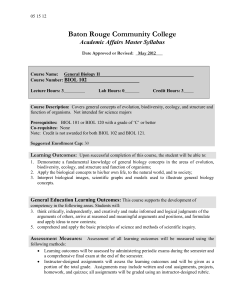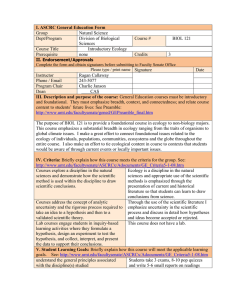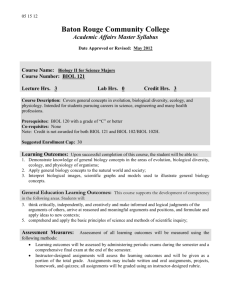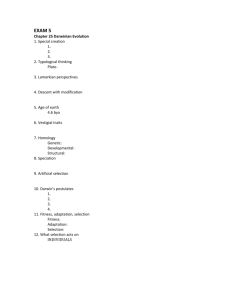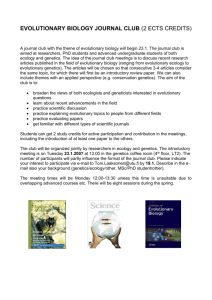DOC - San Juan College
advertisement
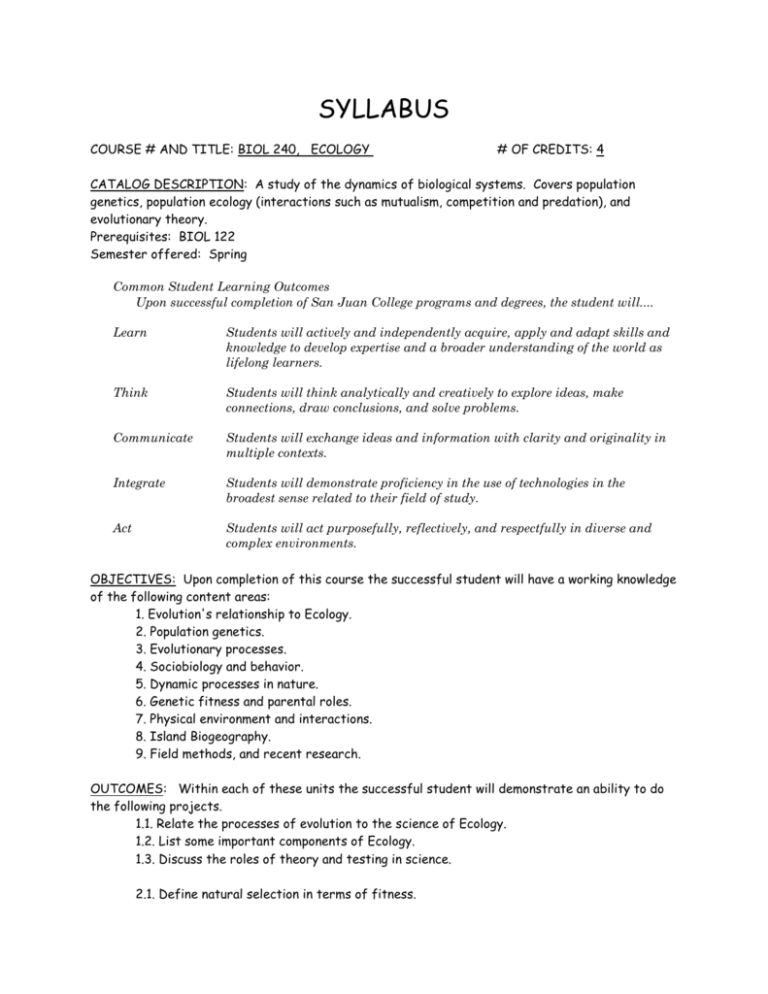
SYLLABUS COURSE # AND TITLE: BIOL 240, ECOLOGY # OF CREDITS: 4 CATALOG DESCRIPTION: A study of the dynamics of biological systems. Covers population genetics, population ecology (interactions such as mutualism, competition and predation), and evolutionary theory. Prerequisites: BIOL 122 Semester offered: Spring Common Student Learning Outcomes Upon successful completion of San Juan College programs and degrees, the student will.... Learn Students will actively and independently acquire, apply and adapt skills and knowledge to develop expertise and a broader understanding of the world as lifelong learners. Think Students will think analytically and creatively to explore ideas, make connections, draw conclusions, and solve problems. Communicate Students will exchange ideas and information with clarity and originality in multiple contexts. Integrate Students will demonstrate proficiency in the use of technologies in the broadest sense related to their field of study. Act Students will act purposefully, reflectively, and respectfully in diverse and complex environments. OBJECTIVES: Upon completion of this course the successful student will have a working knowledge of the following content areas: 1. Evolution's relationship to Ecology. 2. Population genetics. 3. Evolutionary processes. 4. Sociobiology and behavior. 5. Dynamic processes in nature. 6. Genetic fitness and parental roles. 7. Physical environment and interactions. 8. Island Biogeography. 9. Field methods, and recent research. OUTCOMES: Within each of these units the successful student will demonstrate an ability to do the following projects. 1.1. Relate the processes of evolution to the science of Ecology. 1.2. List some important components of Ecology. 1.3. Discuss the roles of theory and testing in science. 2.1. Define natural selection in terms of fitness. 2.2. Discuss Hardy - Weinberg Equilibrium and state its assumptions. Explain why it's important. 2.3. Differentiate between r and K selection. 2.4. State Fisher's Fundamental Theorem of Natural Selection. 3.1. Define adaptation and niche. 3.2. Discuss microhabitats, limiting factors and behaviors as they influence adaptation. 3.3. Treat pitfalls in the ideas about adaptation. 3.4. Define and discuss the dynamics of speciation. 3.5. Describe adaptations in terms of evolutionary stable strategies. 4.1. Define and distinguish among altruism, kin selection, selfishness and variable behaviors. 4.2. Explain the advantages of various social systems in terms of fitness. 5.1. Define or describe the Red Queen's Hypothesis. 5.2. List interactions in nature and discuss theoretical treatments of each. 5.3. Describe some current work dealing with the question. Is nature deterministic? 5.4. Discuss some of the factors involved in the structuring of natural communities. 6.1. Discuss parental roles and strategies. 6.2. Tell how parent - offspring roles change in ecological and evolutionarytime. 7.1. Discuss biotic - abiotic interactions from both directions. 7.2. Describe latitudinal differences in interactions. 7.3. Discuss patchiness in space and in time. 8.1. State the assumptions of the Equilibrium Theory of Island Biogeography. 8.2. Change the assumptions and describe the results. 8.3. Discuss habitat and time islands. 8.4. Relate the theory to wildlife management and to parks and refuges. 9.1. Discuss diversity indices, their value, and how to derive them. 9.2. Describe some plant and animal census techniques. 9.3. Discuss testable hypotheses and creativity of tests. 9.4. Explain why statistics are used. 9.5. Give some examples of recent research. 9.6. Integrate some new ideas into the conventional wisdom of the field. Syllabus developed by ____________________ Date: _____________________ Syllabus reviewed by _____________________ Date: _____________________ A current syllabus must be on file in the dean’s office for every course being taught during a given semester.



